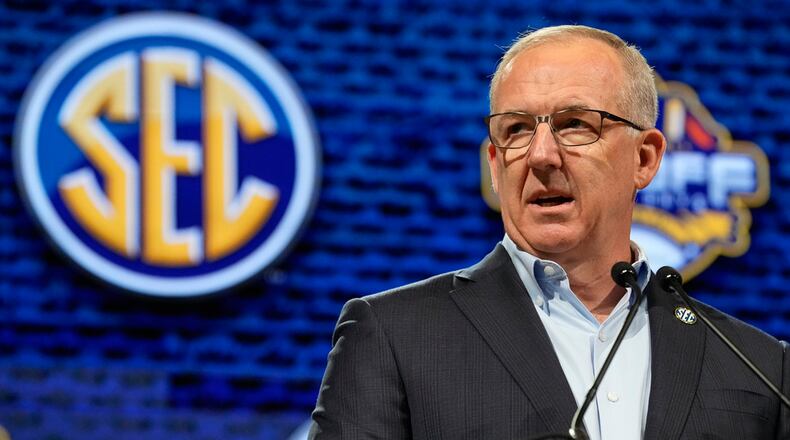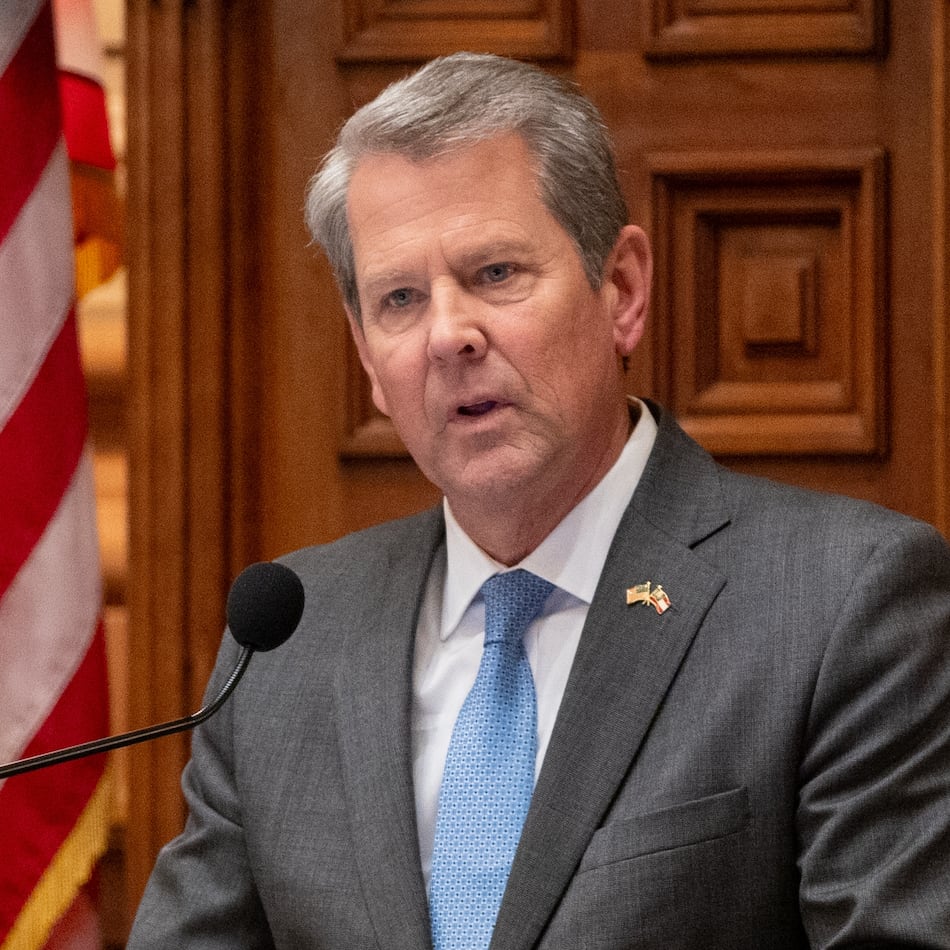MIRAMAR BEACH, Fla. – Greg Sankey could not help but reminisce Monday as he stood before a group of reporters on the bottom floor of Hilton Sandestin Beach Resort. He noted that on June 1 he will start his 10th year as commissioner of the Southeastern Conference.
Sankey was reminded of a statement he made in that first year. Quoting songwriter Bob Dylan, he infamously said, “The times, they are a-changin’.”
“That was an understatement, as it turns out,” Sankey said Monday, laughing as opened a briefing on this week’s SEC Spring Meetings, which get underway Tuesday morning. “That was the understatement of the decade.”
Indeed, there has been seemingly nonstop change in college athletics since then. It may have reached a crescendo last week when the four remaining power conferences joined the NCAA in an agreement to settle the House case and two other multibillion-dollar lawsuits demanding revenue-sharing for athletes. That settlement will allow college athletes to receive pay directly from the schools for which they compete.
That landmark decision comes on the heels of other sweeping reforms that have occurred since Sankey stepped into his current role in 2015. Those include, the adoption of Name, Image and Likeness legislation and college athletes being allowed unlimited transfers.
How to pay for all of that and bring the chaos into some semblance of control will dominate the discussions this week as SEC coaches, administrators and athlete representatives gather for this annual, end-of-year meeting outside Destin.
Some of this, Sankey saw coming. He revealed that part of the interview process to find a successor to Mike Slive as SEC commissioner included composing 1-, 3- and 10-year plans for the conference. Sankey kept his copy.
“What’s interesting is I’ve gone back and looked and I batted like .700 on that one-year plan,” Sankey said. “The 3-year plan, some of that took five years. The 10-year plan, it talked about change; not predicting this sort of change, but it talked about people wanting to come to us wanting to find out how we sustained success and asking us questions. … I think the OU and Texas outreach was very much about wanting to be a part of things because we’ve done things so well.”
Though Oklahoma and Texas will not be officially indoctrinated until July 1, this year’s meetings will feature full contingents from the SEC’s newest two members. The schools sent its presidents and athletic directors for the first time last year.
Sankey labeled this “the summer of change” as the league transitions from its previous broadcast rights relationship with CBS to the new one it has brokered with Disney/ESPN.
Even what was said and done at these very meetings just a year ago seems like ancient history in comparison. Last year, questions about whether the league should adopt a nine-game conference schedule for football in an expanded, 16-team SEC dominated Sankey’s briefing. Not only was that not resolved during that session, it also won’t be this week either.
“I don’t expect a lot of conversation here about football scheduling,” Sankey said. “Given all that’s happening around us – dot, dot, dot – scheduling is kind of out there and we’ll continue to talk about it. But we will have some updates.”
They also are going to discuss “student-athlete availability reporting.” Laymen might call those injury reports, but Sankey doesn’t like to use that term. He said due to recent realities regarding the proliferation of legalized – and illegal gambling – the league is considering offering “availability” information in the future in the sports of football, men’s and women’s basketball, baseball and volleyball.
“We don’t want to rush into something and it’s not ‘injury reporting’ due to some of the privacy issues that we have,” Sankey said. “Yet, when you start to see the number of dollars that are being bet on college sports, not just football, it gets your attention. We have to be thoughtful about how information is managed.”
As for Sankey’s own management style, he said that has changed profoundly over the last nine years. That has been even more dramatic in the last year or so.
“One, I didn’t go to Washington D.C. a lot then,” he said of the beginning of his tenure. “I think I’ve been there five or six times this year, with more to come. I had no cell number of the members of the house or senate; now I have many and they have mine.”
The itinerary for the SEC meetings has changed dramatically as well. Among the items on this week’s agenda include revenue-sharing models, scholarship and roster caps, the impact of revenue-sharing, collective bargaining and/or employee status for athletes, NCAA enforcement, and continued conference realignment.
“We just had a staff meeting,” he said of the SEC office. “I said, ‘if you think I’ve been distant and not around and focused on things you’re not focused on, you’re exactly right.’ That’s because of what’s going on around us.”
Sankey even has had to change his attire. He’s having to break in a new belt. The old one he has worn since becoming commissioner includes the insignia of 14 SEC members. The new one has 16, adding Oklahoma and Texas.
Times, they still are a-changin’, indeed.
About the Author
Keep Reading
The Latest
Featured



